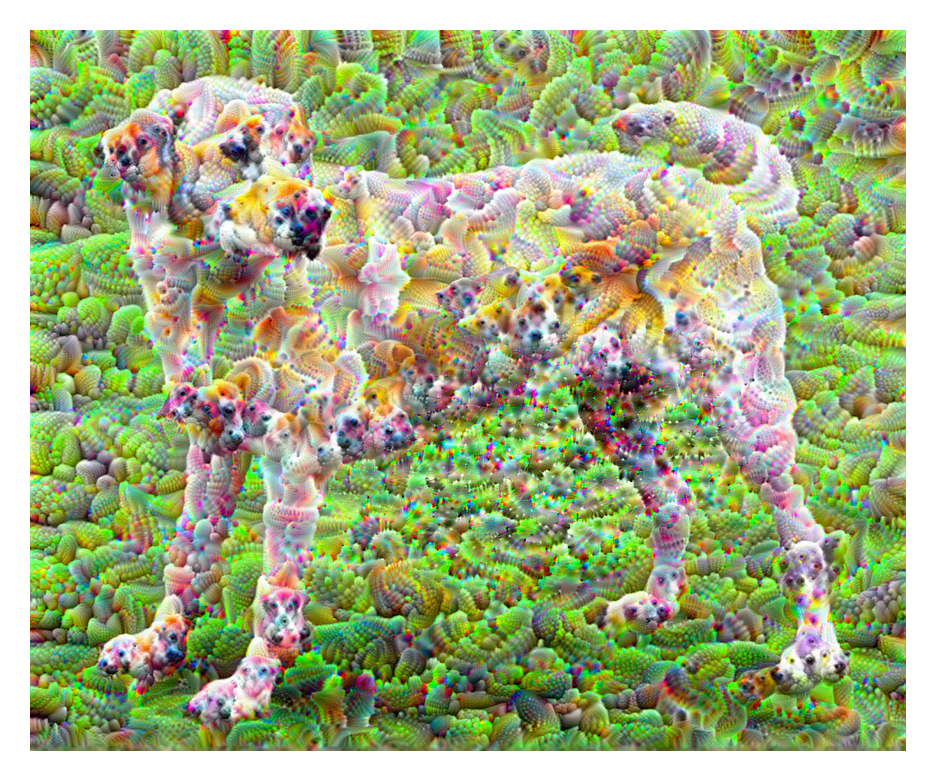DeepDream with Keras and Tensorflow - Neural Networks That Hallucinate?


Overview
Hierarchical abstraction appears to be what our brains do, with increasing support in the field of Neuroscience. While some protest drawing lines between the computation the brain does and silicone computing found in computers, some support the parallels, such as Dana H. Ballard in his book "Brain Computation as Hierarchical Abstraction", who works as a Computer Science professor at the University of Texas, with ties to Psychology, Neuroscience and the Center for Perceptual Systems.
Inspired by hierarchical abstraction of the visual cortex, CNNs are hierarchical, and hierarchical abstraction is what allows them to do what they do. Exploiting exactly this property is what allows us to create a really fun (and practical) algorithm, and the focus of this lesson. It's called DeepDream, because we associate odd, almost-there-but-not-there visuals with dreams, and the images are induced by a deep convolutional neural network.
In this lesson, you'll learn about the DeepDream algorithm, with gaussian gradient smoothing, and learn to create images such as:




Note: This Guided Project is part of our in-depth course on Practical Deep Learning for Computer Vision.
Lessons
What is a Guided Project?
Turn Theory Into Practice
All great learning resources, books and courses teach you the holistic basics, or even intermediate concepts, and advise you to practice after that. As soon as you boot up your own project - the environment suddenly isn't as pristine as in the courses and books! Things go wrong, and it's oftentimes hard to pinpoint even why they do go wrong.
StackAbuse Guided Projects are there to bridge the gap between theory and actual work. We'll respect your knowledge and intelligence, and assume you know the theory. Time to put it into practice.
When applicable, Guided Projects come with downloadable, reusable scripts that you can refer back to whenever required in your new day-to-day work.